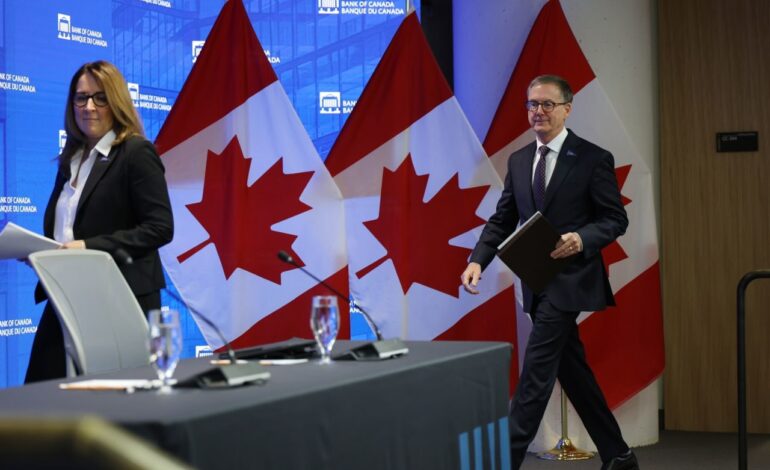Bank of Canada Depletes Resources Amid Trade Struggles

The Bank of Canada has announced that it has exhausted its available tools to support a struggling economy impacted by ongoing trade tensions with the United States. As the central bank grapples with the effects of tariffs and fluctuating trade relations, it emphasized that its current monetary policy options are now limited.
The economic landscape in Canada has been profoundly affected by the trade row with the U.S. According to recent data, the tariffs imposed have led to significant disruptions in various sectors. The central bank noted that growth forecasts for the Canadian economy have been downgraded, reflecting concerns about the sustainability of recovery in light of these challenges.
Trade Disputes Impacting Growth
In its latest statement, the Bank of Canada acknowledged that the persistent trade disputes have created an environment of uncertainty for businesses and consumers alike. The bank’s governor, Tiff Macklem, highlighted that the impact of tariffs extends beyond immediate financial considerations, affecting confidence in the market and investment decisions.
Despite previous rate adjustments aimed at stimulating growth, the bank indicated that it can no longer rely on traditional monetary policy measures. Interest rates, already low, have reached a point where further cuts are unlikely to yield substantial benefits. The bank’s current interest rate stands at 5.00%, a figure that reflects its attempts to balance inflationary pressures with the need for economic support.
The Canadian economy is now facing a dual challenge: navigating the fallout from trade disputes while also managing inflation that remains stubbornly high. As consumer prices rise, the central bank must tread carefully to avoid exacerbating the situation further, particularly in sectors that are heavily reliant on exports to the U.S.
Looking Ahead: Strategies for Recovery
With its toolbox now nearly empty, the Bank of Canada is exploring alternative strategies to bolster the economy. This includes engaging with government officials to discuss potential fiscal measures that could provide support where monetary policy has fallen short. The bank believes that collaboration with policymakers could be essential in addressing the challenges posed by international trade dynamics.
Economists and analysts are keenly watching the situation, as any new developments could reshape the outlook for Canada’s economic recovery. The trade row with the U.S. remains a critical factor that could influence future growth patterns.
As the situation evolves, the Bank of Canada remains committed to monitoring economic indicators closely. The central bank aims to ensure that it remains responsive to the needs of the economy while navigating through these tumultuous times.
With the stakes high, the actions taken in the coming months will be pivotal in determining the trajectory of Canada’s economic recovery and its ability to withstand external pressures.






